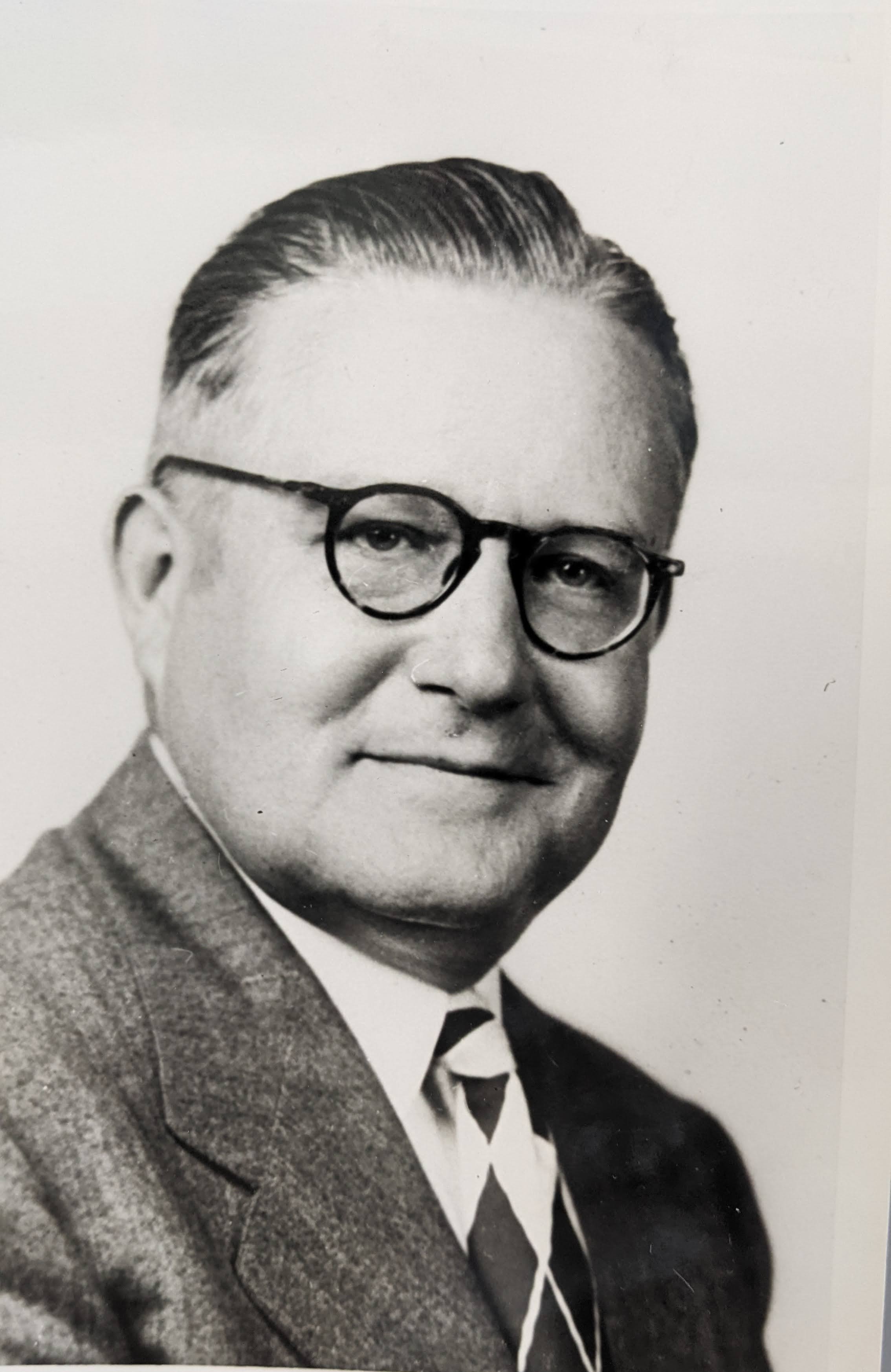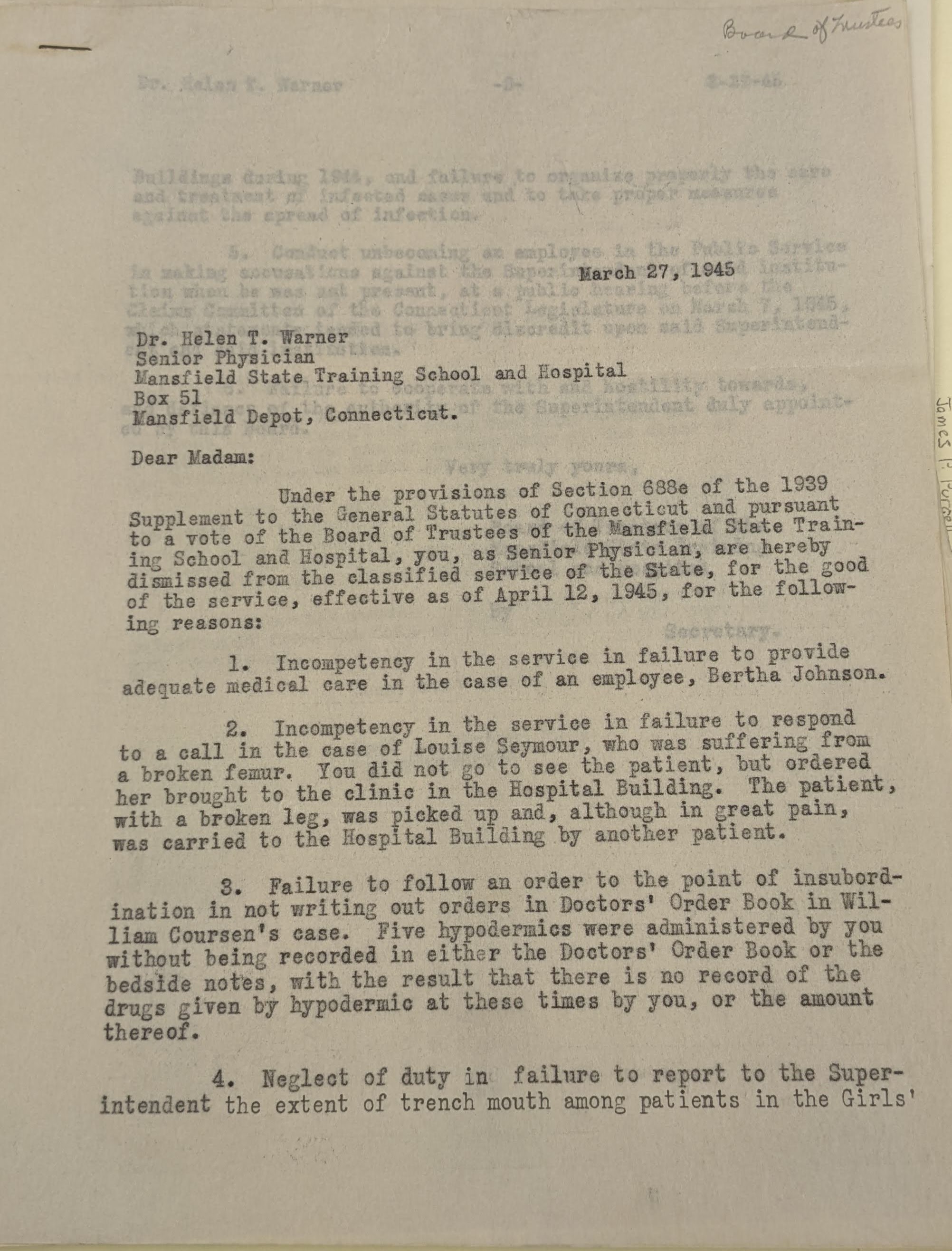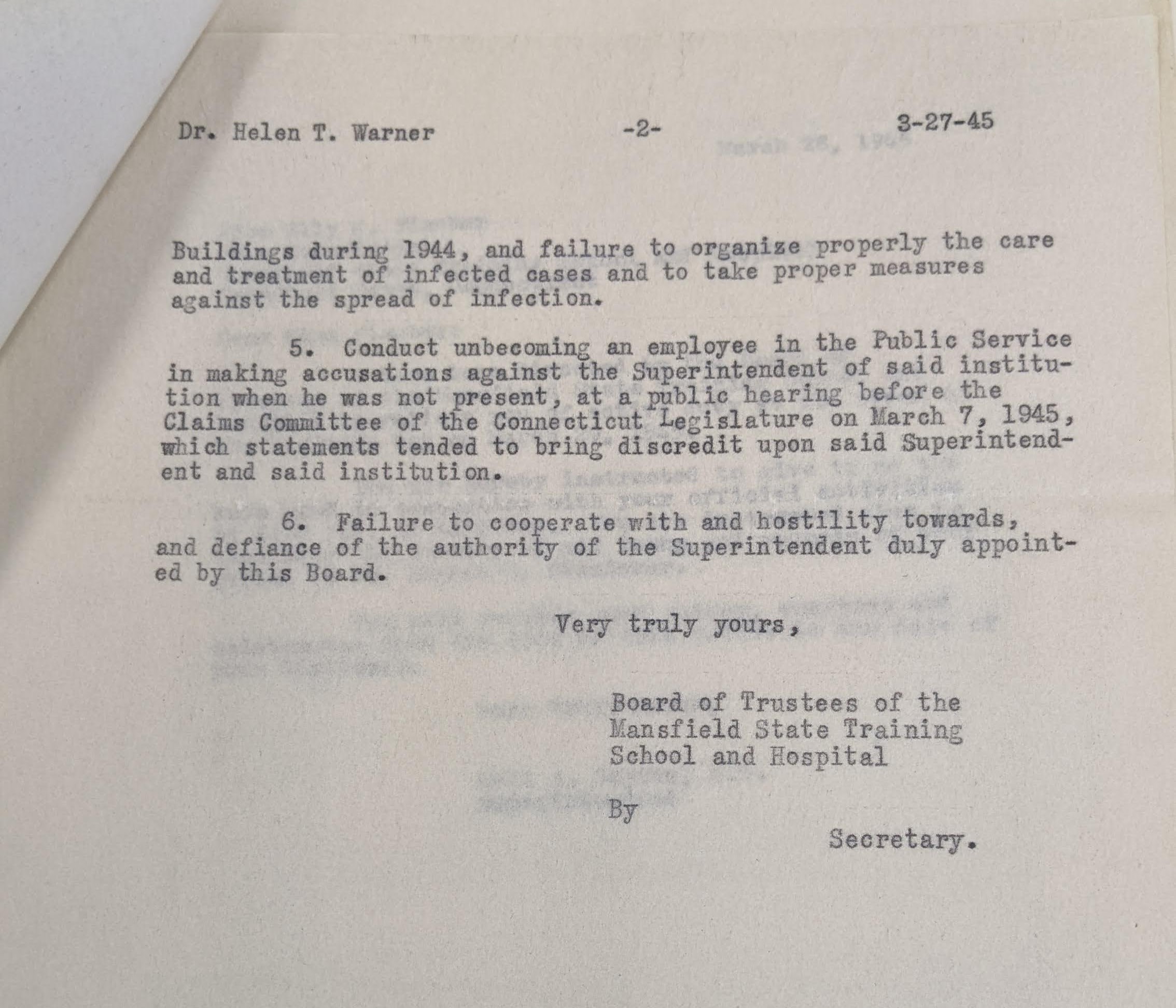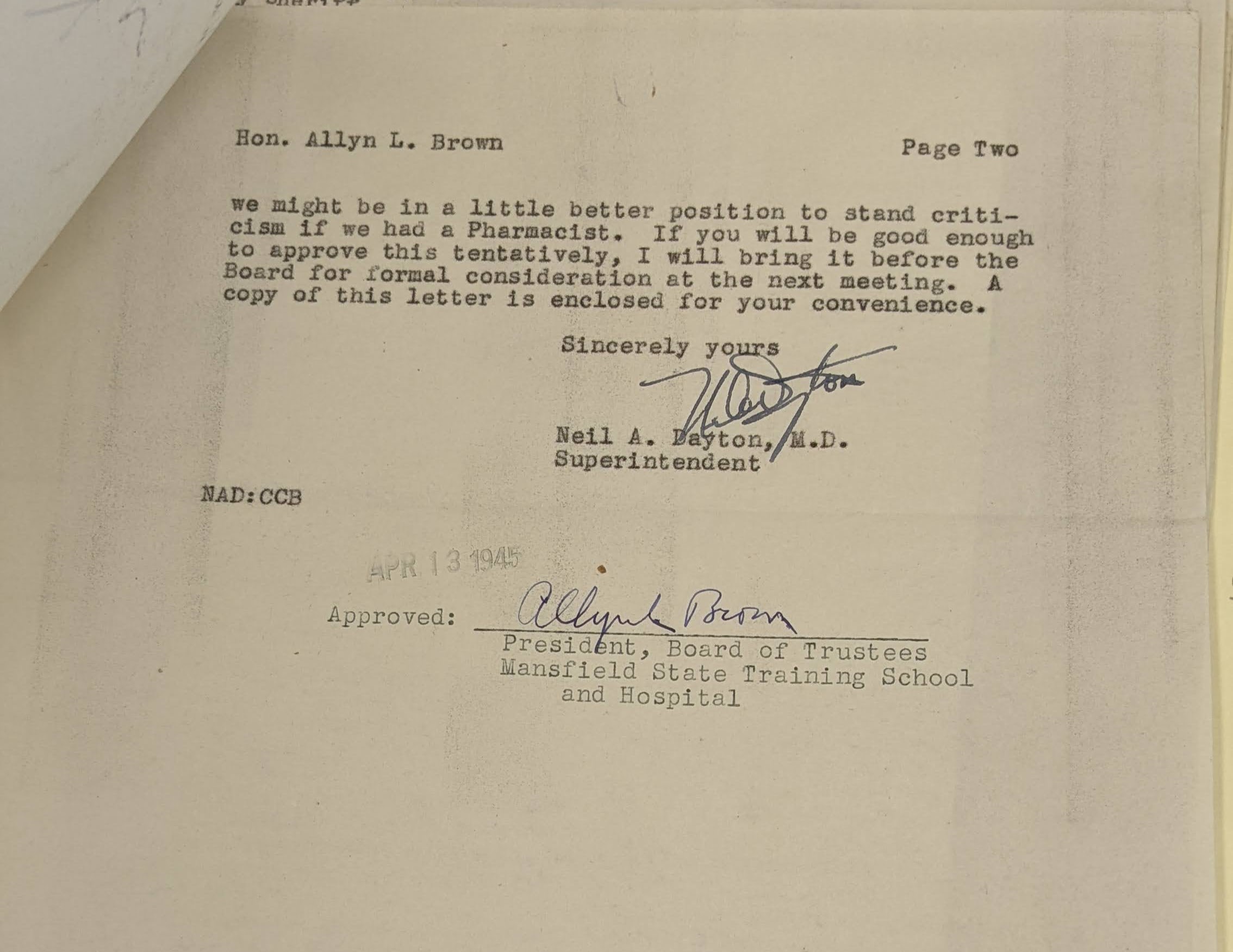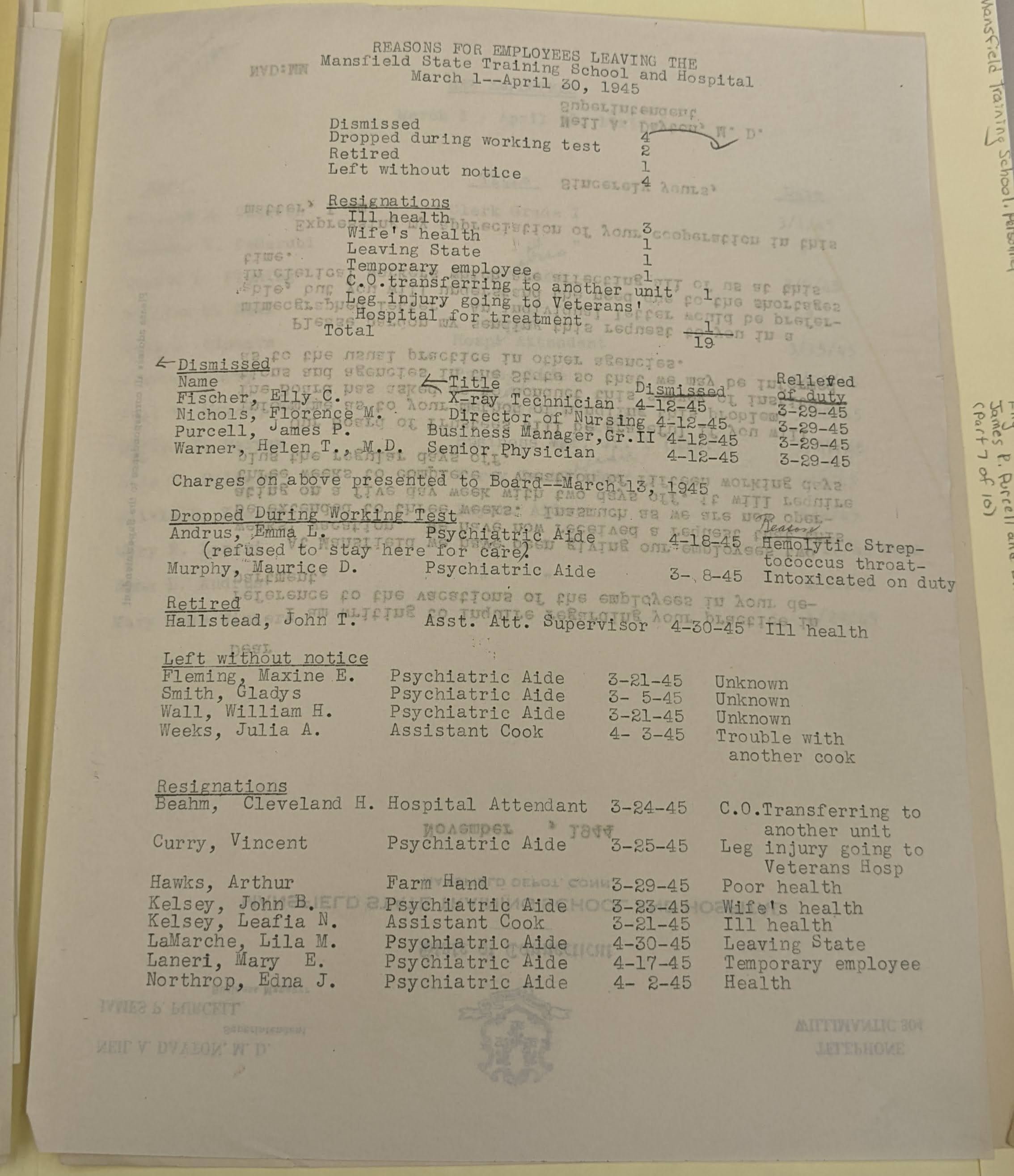By: Matthew Iannantuoni
Enraptured by the findings of the termination papers, I dove back into the folders of the “Dismissal and legal action regarding Elly C. Fischer, Florence M. Nichols, James P. Purcell, Dr. Helen T. Warner” where I found another shred of evidence that seems to only muddy the story I was trying to uncover. On a yellowed piece of legal paper was, in faint handwriting “Overheard in staff dining room by patients (waiters) Dorothy Reynolds on the day of the write up in the paper (Tuesday Dec 14 1944.)” This faded note from some unknown staffer details a conversation between the three medical staff members who would be terminated less than a year later. The conversation goes as follows:
“Dr Warner said the paper did not blame him enough”
Mrs. Nichols replied “they’d get something on him yet.”
Mrs Fischer said “He’s such a damn liar he’d deny it anyway”
“The next day Dr. Warner said to Dorothy Reynolds ‘you’d better look out they may send you to the Superintendent’s office’”
She replied, “I wouldn’t go to the office and tell anything.”
Dr Warner said “That’s right Dorothy don’t go”
The girl was told not to tell anything she overheard them talking about in the dining room”
This faded piece of paper gives so much muddying insight into how things at MTS were running at the time. It seems as though the three medical staff members, Warner, Nichols and Fischer all spoke out to a newspaper against Superintendent Neil Dayton, but that the resulting article did not cover all that they were complaining about. The conversation with one of the patients also gives some insight into how Dayton ran the institution; the threat of going to the Superintendent’s office is enough to keep the patient quiet. It really calls into question some of the more intense complaints on the termination letters. Some of the most egregious examples are in Dr. Warner’s termination letter, which states:
“Incompetency in the service in failure to respond to a call in the case of Louise Seymour, who was suffering from a broken femur. You did not go to see the patient, but ordered her brought to the clinic in the Hospital Building. The patient, with a broken leg, was picked up and, although in great pain, was carried to the Hospital Building by another patient”
There is also the complaint:
“Failure to follow an order to the point of insubordination in not writing out orders in Doctor’s Order Book in William Coursen’s case. Five hypodermics were administered by you without being recorded in either the Doctor’s Order Book or the beside notes, with the result that there is no record of the drugs given by hypodermic at these times by you, or the amount thereof.”
While these seem like rather appalling offenses from the director of nursing, there are other shreds of evidence that sway in the direction that Dr. Warner was doing the best she could with limited resources. For example, in a letter from Dayton to the Chairman on the Board of Trustees there is the request to hire a pharmacist because “the work of the Drug Room has been taken care of by Mrs. Nichols and the other registered nurse. However, properly speaking, this is not their work and it has not been a very satisfactory procedure,” Later stating that “We might be in a little better position to stand criticism if we had a pharmacist” of which criticism is probably referring to the newspaper article that started this controversy.
Another piece of damning evidence is the document titled “REASONS FOR EMPLOYEES LEAVING THE: Mansfield State Training School and Hospital March 1– April 30, 1945” which details that a total of 19 staff members had resigned, retired, or left without notice all in the same short period. While there is little explanation left for this mass exodus it seems as though there was some great discontent when only 2 of the 19 left for reasons pointing toward a consensual and mutual break.
As mentioned in my previous blog post, this is the rub in doing this kind of archival work, we are left with a few puzzle pieces that can fit together several different ways. Was it truly a bad set of staff that were not fulfilling their job responsibility? Was it poor leadership that set impossible standards in an attempt to rid the institution of workers speaking out against some cruelty in the institution? Was it some unknown third factor that has been lost to time? Given what we know about how patients were treated at the Mansfield Training School it is important to ask who is to blame, which, of course, is never a cut and dry answer. However, any shred of definitive culpability seems to be lost to time, given the documents left behind.
Image 1: Superintendent Neil A. Dayton.
Image 2: “Overheard in staff dining room by patient.”
Images 3 & 4: The termination letter of Dr. Helen T. Warner.
Images 5 & 6: A letter from superintendent Dayton to the Chairman of the Board of Trustees requesting the hire of a pharmacist in order “to better stand criticism.”
Image 7: “Reasons for Employees Leaving the Mansfield Training School and Hospital March 1- April 30, 1945.”
